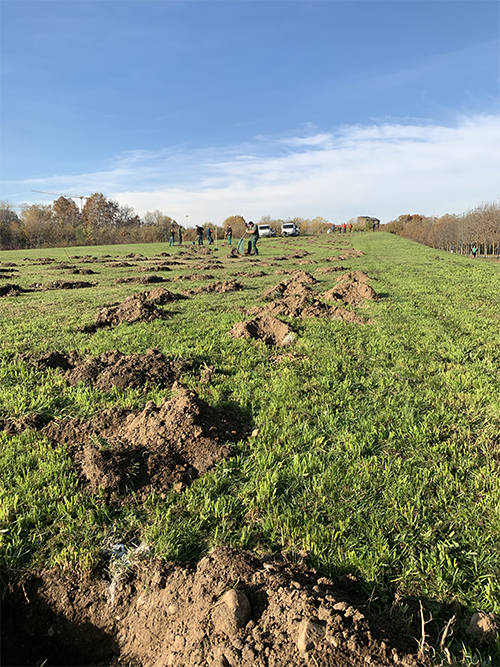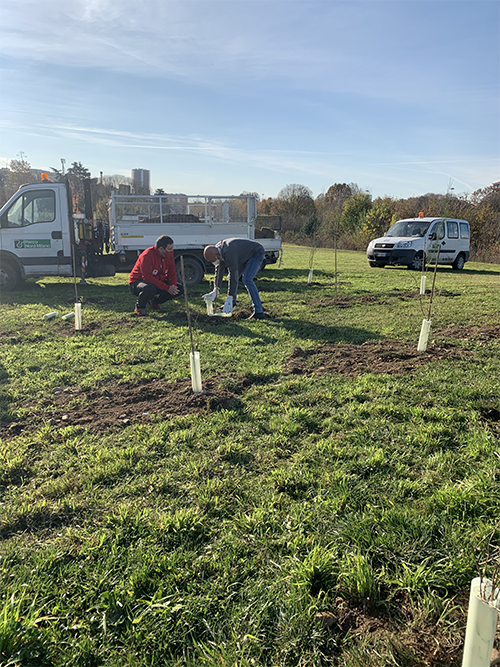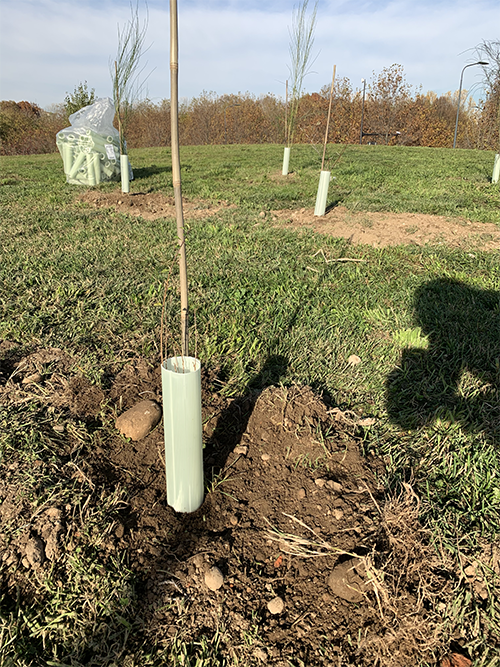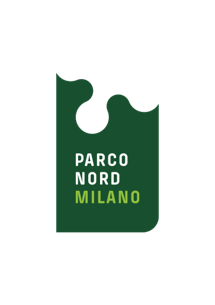Case Study
Forestation of an agricultural area recently acquired by Parco Nord Milano.
Contact name
Fabio Campana
Institution name
Parco Nord Milano
Region & country
Lombardy, Italia
Summary
After the acquisition of an agricultural area, Parco Nord Milano started a project of reforestation and redevelopment of the site. The project consisted in the removal of alien plant species, the plantation of forest seedlings and mature trees and the construction of naturalistic infrastructures. These minimally invasive actions transformed the agricultural area into a forest area with an important naturalistic value and a high attractiveness for the Park’s users that prefer wilder areas.

Soil preparation for planting activities

Planting actions

A freshly planted tree
Background of the project
The area of interest wasn’t part of the protected area and it was an agricultural area maintained as a permanent meadow (forage use), without trees.
After the acquisition of the area there was the necessity of its integration with the already existent green system and the landscape of the Park. Another need was to make the site accessible to Park’s visitors.
Solution and actions taken
Parco Nord Milano has done a reforestation of the area and some naturalistic enhancement actions, like the construction of 4 pools for the green toads Bufotes viridis and the plantation of a section of the pollinators highway.
The reforestation project started in autumn of 2019 and ended in spring of 2021. It consisted in a first action of preparation of the area, with the removal of the invasive alien plant species Ailanthus altissima, and a second action of plantation of forest seedling and also of mature trees.
Other institutions or parties involved
The forestation has been done inside Forestami, a project of urban forestation which aims to plant 3 million trees by 2030 in the area of the Metropolitan City of Milan.
Results
The action produced a new forest area of 4.6 ha inside the Park, with 3220 forest seedlings and 58 mature trees (Tilia tomentosa) and some naturalistic infrastructures that increase its environmental value (4 pools for green toads, section of pollinators highway). The action wasn’t excessively invasive, so the area is quite wild.
Challenges
During the action of preparation of the area, there was a big amount of Ailanthus altissima to remove. The removal of this species is a very demanding and expensive job, because the entire root system must be removed.
Lessons learned
A minimally invasive action can create an area very attractive for the Park’s users who prefer wilder areas.
